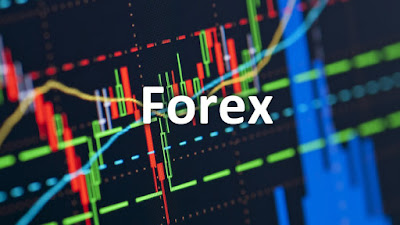Currency prices are constantly fluctuating against each other, offering multiple trading opportunities daily.
Trading Forex
Unlike most financial markets, the OTC (over-the-counter) foreign exchange market has no physical location or central exchange and trades 24-hours a day through a global network of businesses, banks and individuals. This means that currency prices are constantly fluctuating in value against each other, offering multiple trading opportunities.
At City Index, you can speculate on the future direction of currencies, taking either a long or short position depending on whether you think the currency’s value will go up or down. The below video shows you how to trade the EUR/USD currency pair with CFDs.
FX Trading steps
1. Choose a currency pair
Decide which currency pair you wish to trade. With over 65 currency pairs to choose from, picking a trading opportunity that’s right for you is important.
City Index’s technical and fundamental research tools can help you spot currency trading opportunities to suit your trading style. We recommend that you take your time to understand the amount of price volatility associated with the currency pair to help manage your risk.
2. Decide on the type of FX trade
There are three ways to trade forex with City Index Spread Betting, CFD or Forex Trading. Each has its particular stake size:
In spread betting you trade pounds per point movement
In CFD trading you trade a quantity of CFDs in the unit of the base currency (currency on the left). For example if you trade GBP / USD your stake would be in Pounds, while in USD / JPY your stake would be in US Dollars
In Forex trading you buy lots, in the unit of the base currency (currency on the left)
For example if you trade GBP / USD your stake would be in Pounds, while in USD / JPY your stake would be in US Dollars (the minimum stake size is 1000)
3. Decide to buy or sell
Once you have picked a market, you need to know the current price it is trading at, which you can do by bringing up an order ticket in the platform. All forex is quoted in terms of one currency versus another. Each currency pair has a ‘base’ currency and a ‘quote’ currency. The base currency is the currency on the left of the currency pair and the quote currency is on the right. Put simply, when trading foreign currencies, you would:
BUY a currency pair if you believed that the base currency will strengthen against the quote currency, or the quote currency will weaken against the base currency.
Your profits will rise in line with every increase in the exchange price.
Every fall in the exchange price below your open level, will net you a loss.
SELL a currency pair if you believed that the base currency will weaken in value against the quote currency, or the quote currency will strengthen against the base currency.
Your profits will rise in line with each point the exchange price falls.
Every increase in the exchange price above your open level, will net you a loss.
Spread - FX pairs have two prices.
The first price is the sell price (known as the bid) and the second price is the buy price (also known as the offer). The difference between the buy price and the sell price is known as the spread, and is basically the cost of the trade.
4. Adding orders
An order is an instruction to automatically trade at a point in the future when prices reach a specific level predetermined by you. You can utilise stop and limit orders to help ensure that you lock in any profits and minimise your risk when your respective profit or loss risk targets are reached.
While not compulsory, given the volatility in FX markets using and understanding risk management tools such as stop loss orders is essential.
A stop loss order is an instruction to close out a trade at a price worse than the current market level and, as the name suggests, is used to help minimise losses. There are two types of stop loss orders - standard and guaranteed.
A standard stop loss order, once triggered, closes the trade at the best available price. There is a risk therefore that the closing price could be different from the order level if market prices gap.
A guaranteed stop loss however, for which a small premium is charged upon trigger, guarantees to close your trade at the stop loss level you have determined, regardless of any market gapping.
A limit order is an instruction to close out a trade at a price that is better than the current market level and is used to help lock in price targets.
Standard stop losses and limit orders are free to place and can be implemented in the dealing ticket when you first place your trade, and you can also attach orders to existing open positions.
Learn more about risk management here.
5. Monitor and close your trade
Once open, your trade’s profit and loss will now fluctuate with each move in the market price.
You can track market prices, see your unrealised profit/loss update in real time, attach orders to open positions and add new trades or close existing trades from your computer or app on your smartphone and tablet.
6. Closing your trade
When you are ready to close your trade, you simply need to do the opposite to the opening trade. Supposing you bought 3 CFDs to open, you would sell 3 CFDs to close. By closing the trade, your net open profit and loss will be realised and immediately reflected in your account cash balance.
Please note that City Index Spread Betting and CFD accounts are FIFO - to read more about this please visit our help and support section.
Forex trading examples
Carefully look through the Forex trading examples here to ensure you understand how forex trading works.


Nenhum comentário:
Postar um comentário